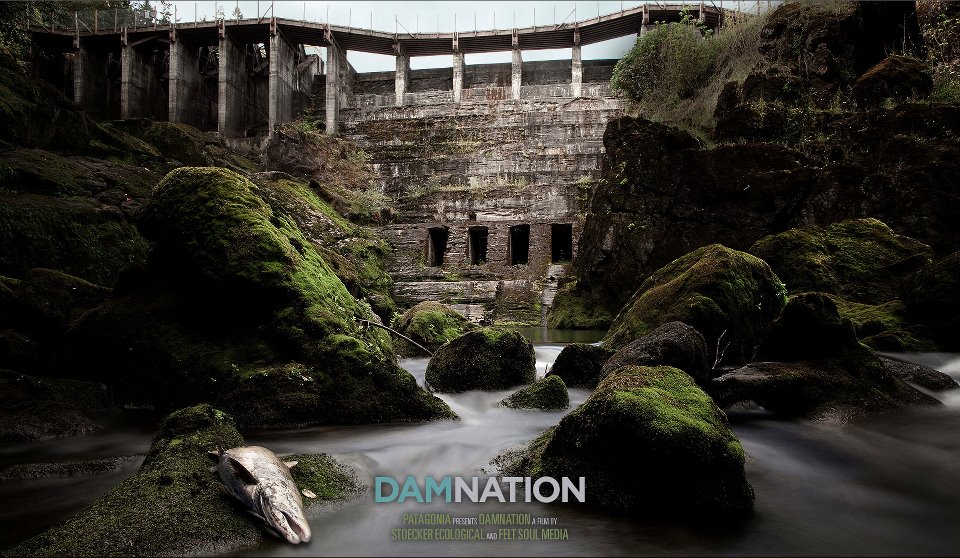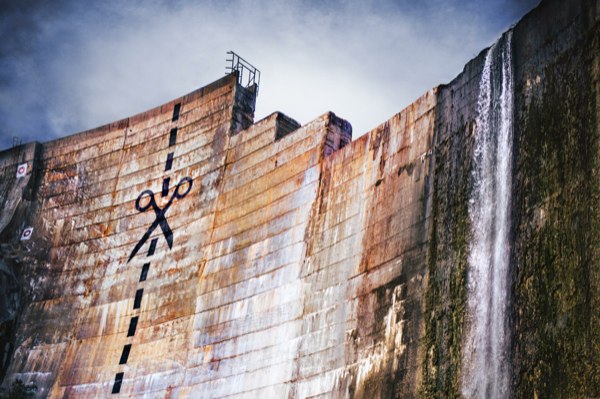DamNation explores the history of dams in the US and the movement to tear down these “engineering marvels” and rediscover the wild flowing rivers and the ecosystems they nourish.


DamNation, A Movement Toward Wild River Restoration
By Ben Knight, DamNation Film
Ninety-nine years after Olympic National Park’s Elwha River was illegally dammed, wild Chinook salmon still instinctively gather at the foot of the lower dam as if they sense a change in the current. Upstream, the usual low rumble of antique turbines generating electricity has faded, and the piercing sound of an excavator-mounted jackhammer reverberates off the 210-foot tall Glines Canyon Dam. De-construction crews have begun the painstaking process of chipping away at its mossy, concaved façade. This moment marks the beginning of the largest dam removal in US history, unveiling the best opportunity for wild salmon recovery in the country.
STORY: Colorado River: Dams and Drought, the Folly of Taming Nature
[vimeo clip_id="41319363" width=600 height=338 ]Dam removal is no longer the work of a fictional Monkey Wrench Gang, envisioned by Edward Abbey. It’s real, upon us, a cornerstone of the modern environmental and cultural movements. The benefits from dams, including hydropower, urban water supply, irrigation, and flood protection have played a critical role in the development of the United States—but river ecosystems and Native American heritage suffered greatly. Now, many of these antiquated relics of the industrial revolution are classified as public safety hazards by the Army Corps of Engineers.
“The continental United States is quickly losing its salmon and steelhead. A free-flowing river is an anomaly. We are beginning to realize the costs of divorcing rivers from the sea: beaches lacking sand and headwaters lacking salmon. Ecosystems are being stripped of the fuel that drives them. The beauty of dam removal is that it works quickly.” — Filmmaker Travis Rummel, in “Outside“


The short-sighted development of a bygone era is growing more prevalent—In many cases, the high cost of retrofitting an aging dam, and meeting current environmental standards has led to a surprising shift in thinking: Dam owners, impacted communities, and politicians are now reevaluating the usefulness of certain dams and often advocating for decommissioning and removal. Some call it a movement, others call it a generational shift in values. Regardless of what it’s dubbed, an undeniable momentum behind river restoration has begun.
Most existing dams lose storage capacity every year due to sediment being trapped behind them, the concrete gets old, reservoirs lose water to evaporation. Proven solutions are popping up around the world showing that alternatives to dams, like groundwater storage, damless diversions, off-stream reservoirs, restored floodplain function, water efficiency and conservation technology, regionally appropriate crops for farming, solar and wind power, and energy efficiency measures make more sense financially and in terms of our own security and reliability. I don’t think removal should be off the table for any dam; it’s more a matter of replacing the current benefits from dams with better options. — Matt Stoecker, Biologist
[vimeo clip_id="33584271" width=600 height=338 ]
Condit Dam Removal on the White Salmon River in Washington State explained. Film By Andy Maser for National Geographic.
DamNation is a collection of impassioned voices and spirited stories from the people entrenched on both sides of this divisive issue. Examining the history and controversy behind current and proposed dam removal projects, DamNation presents a dynamic perspective on human attempts to harness and control the power of water at the expense of nature. Nothing lasts forever, not even the concrete monoliths that have impounded America’s free flowing rivers in the name of “progress” for ages.
—Ben Knight
Patagonia Presents DamNation | A Stoecker Ecological and Felt Soul Media Production | Produced by Matt Stoecker and Travis Rummel | Directed by Travis Rummel & Ben Knight | Edited by Ben Knight | Associate Producer Beda Calhoun
Music: The American Dollar | Signaling Through the Flames last.fm/music/The+American+Dollar/_/Signaling+Through+The+Flames
Music: Pendulum | The Tempest last.fm/music/Pendulum/_/The+Tempest









Pingback: On Wild Rivers, Dams, and Rafting the American | WilderUtopia.com